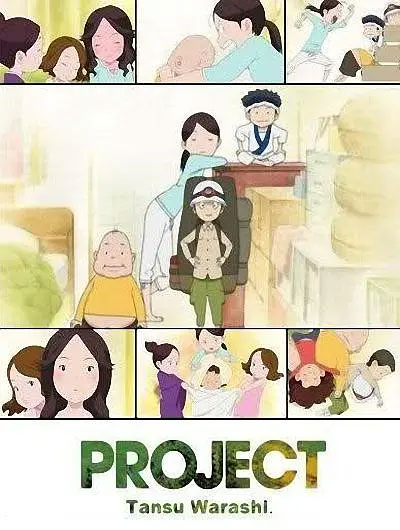Film Name: 橱柜童子 / Tansuwarashi / Drawer Hobbs / たんすわらし。

As I mentioned in my review of “CJ7: The Cartoon,” the appearance of the alien pet must have been foreshadowing the eventual separation. In contrast, while the “Wooden Cabinet Children” aren’t extraterrestrial beings, they are equally eerie spirits. Their presence must also have been setting the stage for the protagonist’s growth, culminating in their final disappearance.
Though both films employ the trope of disappearance, each carries distinct meaning and evokes unique atmospheres. “Drawer Hobbs” radiates a dreamlike warmth, yet this tenderness is inevitably tinged with a hint of regret and loss.
In truth, the “Wooden Cabinet Spirits” have been entrusted within that antique wooden cabinet for generations to help the female protagonist become an outstanding an-nin—the mistress of the Japanese household. Whenever they perceive the mistress lacking in resourcefulness or failing to manage her attire and cooking adequately, they emerge to lend a hand.
The spirit-filled chest, regarded as a vital heirloom, is passed from mother to daughter through generations. On the surface, it transmits the chest itself and the spirit within to aid the new mistress. Yet what truly endures is the legacy of virtues and skills essential for Japanese women to embody the role of a proper homemaker.
Once the mistress masters the skills of tending to her household and herself, the children vanish. Their disappearance is inevitable, for their continued presence would foster dependency, preventing her true growth. However, in this brief 20-minute film, the children’s entire journey—from appearing, assisting, living alongside the mistress, to finally fading away—feels rushed and somewhat unsatisfying. Has the protagonist’s survival skill truly reached a sufficient level? She has merely begun cooking, managing her attire, and organizing her daily life. Many essential survival skills remain unmastered.
Thus, likely constrained by budget and runtime—as a work funded by Japan’s Agency for Cultural Affairs Youth Animator Development Program—this film leaves lingering regrets within its brevity. The children hadn’t fully imparted their abilities to the heroine, and their bond with her could have been explored more deeply. At least two or three of the six children barely interacted with her at all. Had this story been expanded into a feature-length film, the emotional depth, dramatic tension, and the evolving relationship between the heroine and the children could have been rendered far more vividly.
Below is a brief summary of the six children’s characteristics as they appear in the film (in order of appearance):
Chubby Daigoro: Never gets enough to eat
Steady Jirokichi: Helpful, an engineer specializing in home renovations and safety inspections
Outgoing A-Zheng: Lively and capable, with exceptional culinary skills
The mischievous Hanpei: Playful and naughty, loves causing trouble
The spirited Yuki: Cheerful and feisty, skilled at makeup
The virtuous Aya: Well-read and refined, talented in fashion design
In truth, as kitchen spirits tasked with nurturing the protagonist, only Akira, Jirokichi, Yuki, and Aya would suffice. Why include the gluttonous Daigoro and the playful Hanpei?
I believe one reason is that knowing how to handle mischievous, gluttonous children is a skill a good homemaker should master. Thus, the kitchen helpers include such children specifically to teach the female protagonist child-rearing. Another reason is that if the helpers were only positive characters without any negative traits, the group would become overly idealized and lose its real-life charm.
This reveals the director’s thoughtful craftsmanship. Just as we avoid designing characters as flawless paragons, the Wooden Cabinet Children collectively form a “character” that should be richly nuanced. Moreover, even for the protagonist, occasional moments of gluttony or playfulness are perfectly human. The wooden cabinet children merely reflect the aspirations within her heart: to live joyfully while mastering various skills, becoming the ideal homemaker.
So what exactly are the Wooden Cabinet Children? They are reflections of the heroine’s inner self—mirroring the abilities she desires and the life she aspires to live.
The film’s greatest strength lies in its vivid portrayal of the heroine’s journey with the spirits—from their first meeting and growing familiarity to mutual reliance and eventual parting. Each pivotal moment captures her emotions with exquisite subtlety and lifelike precision. Combined with the utterly adorable, fully chibi-ified versions of these capable spirits, it’s impossible not to feel a surge of imagination, longing, and yearning.
Please specify:Anime Phone Cases » Drawer Hobbs 2011 Animation Film Review: For the Appearance of Disappearance